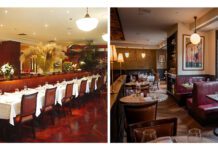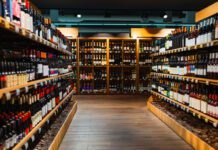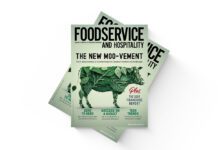By Jenny Febbraro
While induction cooking has gained popularity in European restaurants, Canadian operators have been slow to make the transition. But given the speed, energy efficiency, cost savings, and environmental benefits, it’s only a matter of time before gas is eventually phased out.
In induction cooking, heat is generated within pots and pans through electromagnetic energy. Unlike traditional gas or electric burners, where the surface of the stove becomes hot, induction cooktops directly heat the cookware. Once the proper induction cookware is placed on the cooktop, a magnet below the glass cooktop is triggered, creating friction and the electromagnetic waves to produce heat.
But the need for specialty cookware can deter some operators and the start-up cost of upgrading to induction-compatible equipment can sometimes present an obstacle.
“Initially, induction equipment tends to have a higher upfront cost compared to traditional gas or electric systems,” says Christopher A. Galarza, founder and CEO of EcoChef and Forward Dining Solutions, organizations that consult and train eco-friendly institutions in their transition to induction alternatives. “However, it’s important to highlight the long-term savings through energy efficiency.”
Galarza explains that a gas range can, on average, cook 38.6lbs of food per hour, while an induction range can cook 70.9lbs per hour. This significantly increases an operation’s throughout, which in turn, boosts revenue — and Galarza says there are many more examples of these types of savings and operational efficiencies.
“The industry just needs more education and awareness around the benefits of induction cooking,” says Galarza. “The transition to induction requires culinary professionals to see not just the operational efficiencies, but the health-and-safety benefits.”
Since induction cooktops heat only the cookware and not the surrounding surface, they are safer to use, reducing the risk of burns and kitchen accidents. With the cooking surface staying relatively cool and the physical flame eliminated, there’s no risk of a potholder or apron catching fire.
One of the most arguable advantages is the decreased overall heat that kitchen staff face during the increasingly hot summer months. “Induction cooking dramatically reduces the amount of dollars restaurants spend on air conditioners,” says Galarza, noting that the average kitchen temperature during summer months could regularly shoot up to 54 degrees Celsius. “Meanwhile, an induction-run kitchen typically never runs hotter than 23 degrees Celsius. That’s a dramatic difference — and that alone is a gamechanger.” That’s because gas flames aren’t expending energy into the surrounding air around the pots and pans — only the cookware is heating up.
There’s are also a number of environmental advantages, including the huge reduction in pollutants damaging air quality. This includes the large amounts of methane and particulate matter that come from gas ranges.
“Energy efficiency is the main advantage for chefs,” explains Stuart Sharp, dealer sales manager at the Hatco Corporation. “The most efficient gas burner maxes out at a 40 per cent efficiency rate, while 60 per cent of that energy is sucked into the air around it.” Sharp explains that in a gas-run kitchen, the burners have to run pretty much all the time. “Those burners are cranked to max get that protein breakdown you might need for a steak or the caramelization you might want for onions.”
Sharp says the speed and precision of induction burners allow them to heat up two to three times faster than gas. “There’s a level of responsiveness that’s just incredible,” he says. “And you can adjust that in the same manner and speed as gas.” This includes turning it down low. For example, you can melt chocolate directly in a pot on an induction range, you don’t need a bain marie.
The result is an accuracy with temperature that is quickly leading towards automation within kitchens, especially in franchise operations. With induction cooking now tied to programmable cooktops, Sharp says more chain restaurants will have an induction program for each dish. “This means that chefs will be able to press a button for a stir-fry, and it will increase and decrease the temperatures within a specific time bracket,” explains Sharp. “For the customer, the dish will be prepared in an identical manner at every franchise, no matter where it’s cooked.”
When asked whether this type of programming is the way of the future, Sharp’s response was quick: “It’s happening now,” he says. “We have a couple of chains that already have pre-programmed units and we’re already in the development phase with another chain.” Given the rise of AI, it’s quite possible that virtually all restaurants would shift towards the convenience of pre-programmed menu items, ultimately reducing the cost of intensive training for line cooks.
This brings in a counter-intuitive feature of induction cooking, simply because many operators and chefs aren’t used to technology. “You have to remember, many chefs, especially those on the high end, have learned how to cook on gas. In fact, their whole career has been conducted on a gas range,” he says. “But I really believe once they interact with it and see how powerful a tool it can be, they will quickly be converted.”
Sharp says induction cooking is the closest to gas in terms of response time from knob to heat source. “When most chefs begin using induction, they’ll often burn their first few items,” he notes. “They’re simply not used to the power and speed of induction cooking — so it does require some time to adjust. But once you try it and see the many advantages, it’s hard to revert back to gas.”
Despite the popularity of induction cooking in countries best known for culinary excellence, such as France, Canada has been slow on the uptake. “It’s true, historically, our industry has been gradual, but there are a few obstacles there,” says Leslie H. Banados, senior vice-president of Global Sales and Marketing at CookTek. “There’s always a learning curve associated with adopting new technology, especially in high-paced environments.”
She also notes that there are perceived limitations in power and cooking capacity. “But these are just myths that can easily be shifted once awareness grows regarding the many benefits of induction. We’re seeing more restaurants than ever begin to adopt and embrace it.”
Banados says many chefs are enjoying the portability feature that has made induction so versatile. “The new induction technology means a whole range of different products you wouldn’t be able to access with gas.” These include portable countertop units, drop-in configurations, or induction ranges. “This flexibility allows for adaptable placement in any kitchen setting, making them ideal for expanding kitchen capacities without the need for extensive infrastructure modifications,” she says.
The other advantage is that the warming or “induction holding products” are more convenient as well. “Food can stay at an optimal serving temperature without ever overcooking or drying out,” says Banados. These include CookTek products such as Soupers or Incogneeto, warming products that eliminate the need for wet wells typically used in a buffet-style set-up. In addition, the water wells lead to calcification and require extensive cleaning after take-down.
While the initial cost to set up a kitchen with induction cooktops and compatible cookware can be more expensive upfront compared to traditional gas ranges, Banados notes the substantial energy savings induction equipment provides over time make it a wise long-term choice for businesses. “Several states, with more to follow suit, are offering rebates of up to $750 per hob, incentivizing businesses to make the switch to energy-efficient induction cooking technology,” she says.
With the ever-present threat of climate change, it’s only a matter of time before Canada follows suit.


















